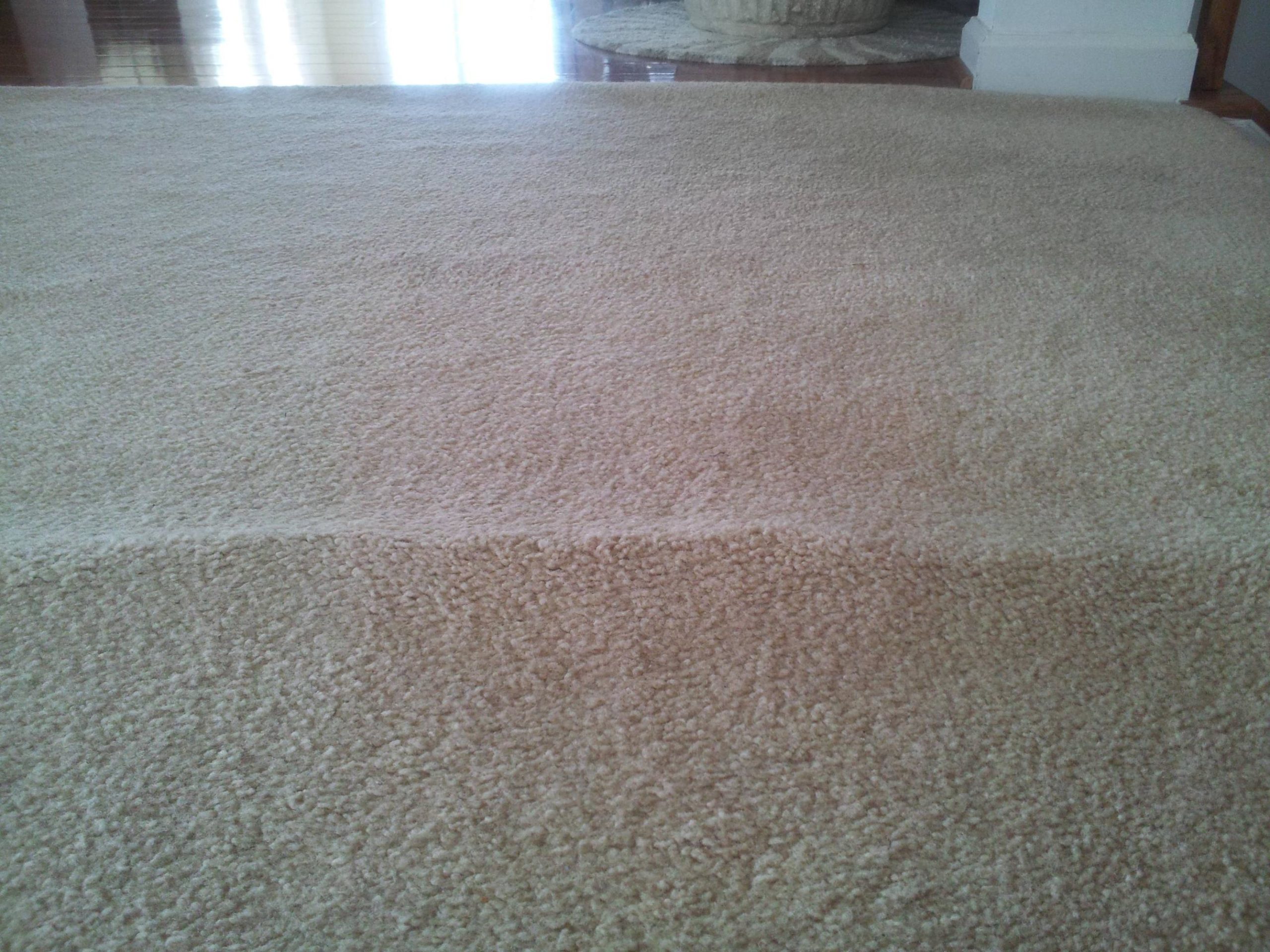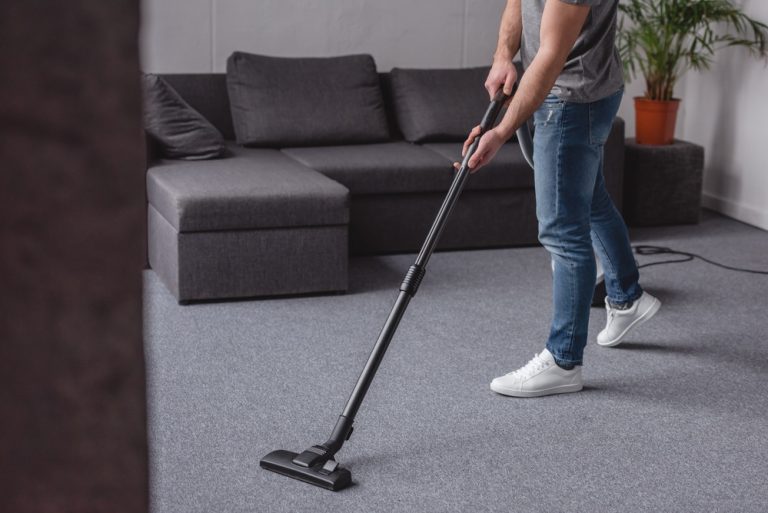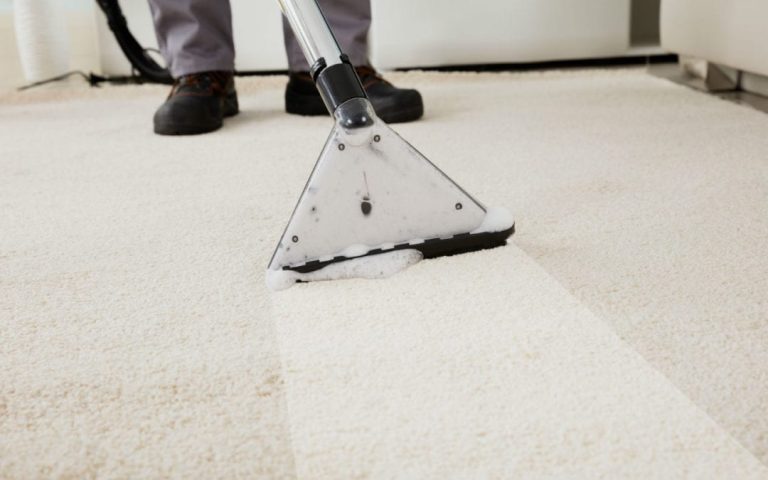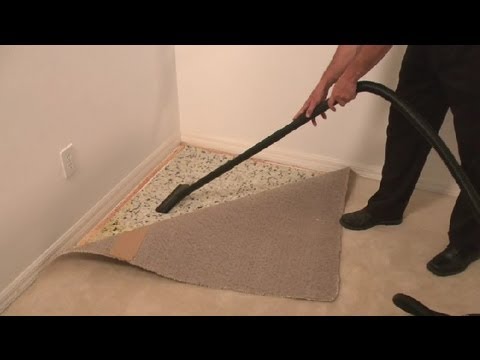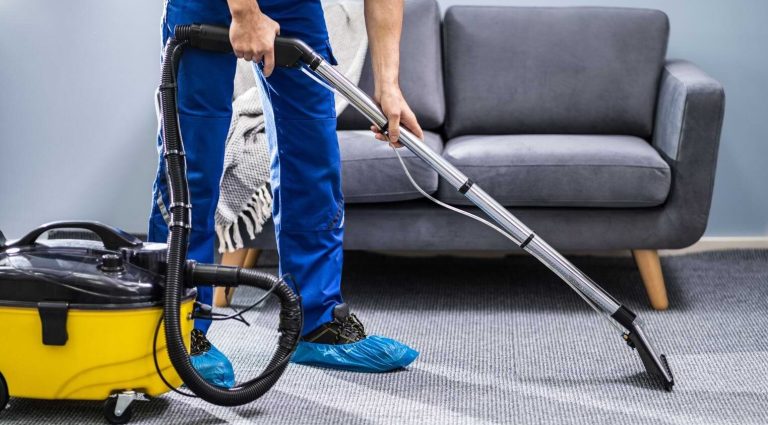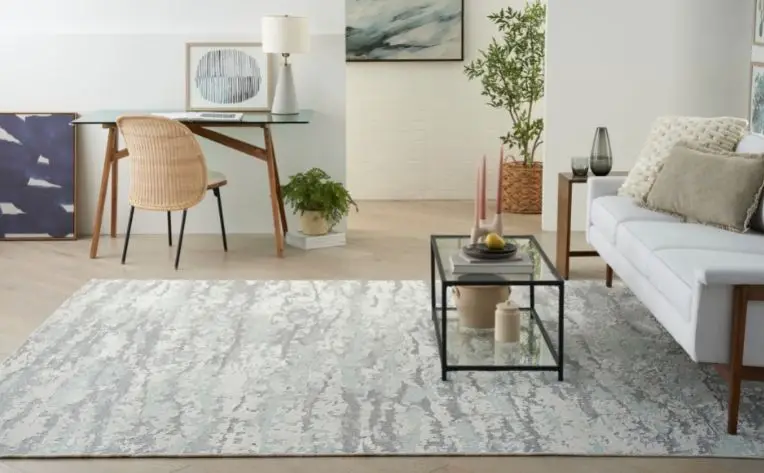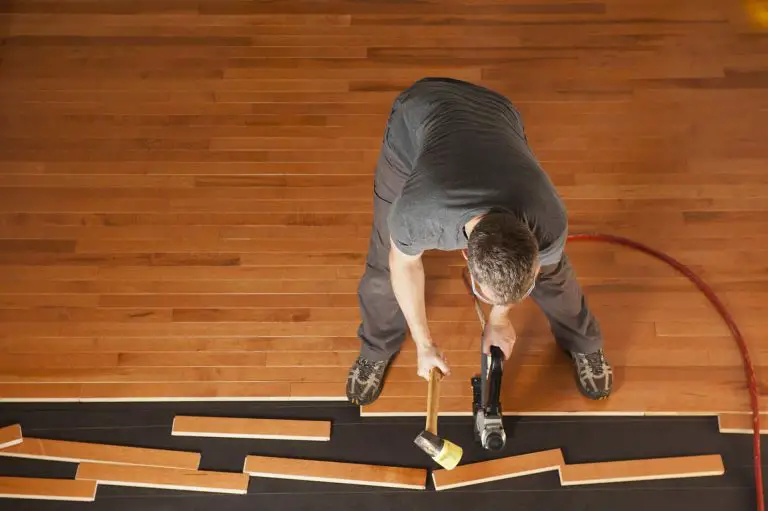What Causes Carpet To Wrinkle
Carpet wrinkles are a common problem for many homeowners. They can be caused by a variety of factors, including improper installation, excessive humidity, and improper cleaning techniques. Improper installation is often the most common cause of wrinkled carpets. If the carpet isn’t properly stretched when it is installed, it can lead to buckling and wrinkles. Excessive humidity can also lead to wrinkles, as the humidity causes the carpet fibers to swell and expand. Improper cleaning techniques, such as using a vacuum cleaner with a beater bar, can also cause wrinkling.
Types of Carpet and Their Risk for Wrinkles
Carpet types vary in their risk for wrinkling. The type of carpet construction – the way it is made – has a major impact on the potential for wrinkling. Generally, carpets made from a tufted loop or cut-pile construction are more prone to wrinkling than other types. Tufted loop carpets, which are made by looping yarns into a backing material, can become wrinkled as the yarns shift over time. Cut-pile carpets, which are produced by cutting loops, can also wrinkle if the fibers are not firmly attached to the backing. Carpet made from a woven construction, such as Wilton, Axminster, or velvet, is usually less prone to wrinkling because the fibers are woven directly into the backing.
In addition to construction, the density and pile height of a carpet can affect its susceptibility to wrinkling. Carpets with a low pile height and low density are more prone to wrinkling because the fibers don’t have the support they need to stay in place. High-density carpets with a higher pile height are generally less likely to wrinkle as the fibers are held more firmly in place.
Finally, the type of fiber used to make the carpet can also have an impact on its ability to wrinkle. Synthetic fibers such as nylon, polyester, and olefin are more prone to wrinkling than natural fibers such as wool or silk. Carpets made from natural fibers are usually more resilient and less likely to wrinkle over time.
When looking for a carpet that won’t wrinkle, it is important to consider the type of construction, density, pile height, and fiber type. Understanding how these characteristics can impact the potential for wrinkling can help you find a carpet that will look great for years to come.
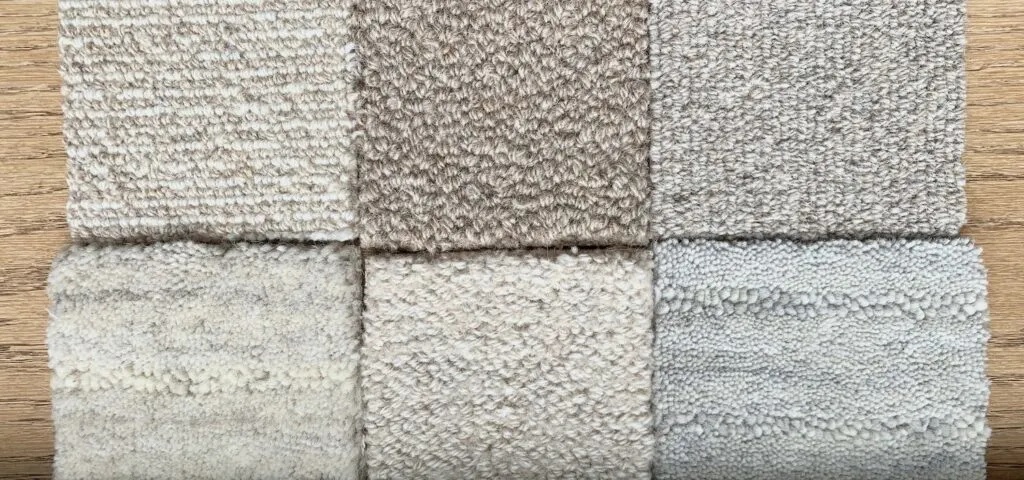
Credit: www.carpetcleaningforce.co.nz
Common Causes of Carpet Wrinkles
Carpet wrinkles can be a major issue that can ruin the look of a room, and if not taken care of, can lead to more serious damage. But what causes carpets to wrinkle in the first place? To understand how to prevent and fix carpet wrinkles, it’s important to understand the most common causes.
One cause of carpet wrinkling is improper installation. If the carpet isn’t laid correctly and stretched tightly enough during installation, it won’t lay flat and will start to wrinkle. Poor handling of the carpet during installation can also lead to wrinkling.
Moisture is another major cause of carpet wrinkling. If the carpet is exposed to too much moisture, it will start to swell and wrinkle. This can happen due to flooding or water damage, but it can also be caused by routine cleaning. If the wrong type of cleaning solution is used or too much moisture is left behind, it can cause the carpet to wrinkle.
Furniture can also cause carpet wrinkling. If furniture is moved around often, it can cause the carpet to wrinkle and buckle up in certain areas. If furniture is left on the carpet for too long, it can cause wrinkles as well.
Finally, age can be a factor as well. Over time, carpets can begin to wrinkle due to wear and tear. This is especially true in high-traffic areas.
By understanding the common causes of carpet wrinkling, you can take steps to prevent it from happening in the first place. Proper installation and handling, avoiding moisture and water damage, and rearranging furniture regularly can all help keep carpets looking new and wrinkle-free.
How to Prevent Carpet Wrinkles
Carpets are a great way to add softness and warmth to a room in your home, but one of the most common issues they can experience is wrinkling. Carpet wrinkling is usually caused by poor installation or improper handling of the carpet. Fortunately, there are some steps you can take to prevent wrinkles from forming.
Firstly, it is important to ensure that the carpet is installed correctly. This means that the carpet should be stretched out properly over the entire area where it is being installed. If the carpet is not stretched properly, it can cause the edges to become loose and eventually wrinkle. Additionally, when handling the carpet, make sure to roll it out instead of folding it, as folding can cause wrinkles to form.
To further prevent wrinkles, it is important to use the right padding for the carpet. The type of padding you choose should depend on the type of carpet you have. For example, thicker carpets should use thicker padding, while thinner carpets should use lighter padding. If you use the wrong padding, the carpet may not be able to lay properly and will end up wrinkling.
Lastly, carpets should be vacuumed regularly. Vacuuming helps to prevent dirt and dust from building up in the carpet fibers, which can cause wrinkles. It is also important to move furniture around occasionally so that the carpet can lay evenly.
By following these steps, you can help to prevent your carpet from wrinkling. Although wrinkles can be annoying, taking the proper steps to prevent them can help to ensure that your carpet looks great for years to come.
How to Repair Existing Carpet Wrinkles
Carpet wrinkles can be a major eyesore and a source of frustration for homeowners. Aside from the aesthetic implications, they can also cause a variety of other problems, such as reducing the lifespan of your carpet and increasing the likelihood of tripping hazards. Fortunately, there are several steps you can take to repair existing carpet wrinkles and prevent them from occurring in the future.
One of the most effective solutions for repairing carpet wrinkles is to stretch the carpet back out. This involves using a power stretcher tool to stretch the carpet fibers back into place. While this is a relatively straightforward process, it’s important to ensure the job is done properly to avoid causing further damage.
Another option for repairing existing wrinkles is to use an adhesive to reattach the carpet backing to the subfloor. This is often done with a hot glue gun, and it’s important to use a product that’s specifically designed for use on carpets. It’s also important to ensure that the glue is applied correctly to avoid creating a bigger problem.
Finally, it’s important to identify and address the cause of the wrinkles to prevent them from occurring again. This could include anything from improper installation to high levels of humidity in the room. Once identified, the cause can be addressed and appropriate steps can be taken to prevent wrinkles from occurring in the future.
In conclusion, carpet wrinkles can be an unsightly and potentially hazardous issue. Fortunately, several steps can be taken to repair existing wrinkles and prevent them from occurring again. The key is to identify the root cause of the wrinkles and take the necessary steps to address it. With the right approach, you can restore your carpet and keep it looking wrinkle-free for years to come.
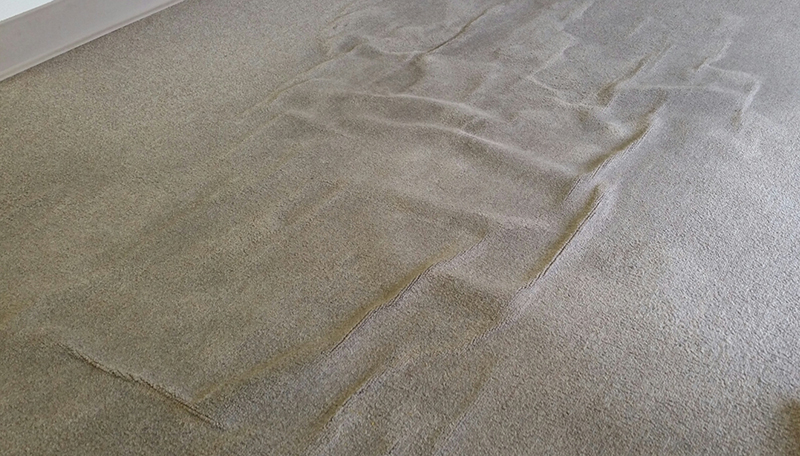
Signs that the Carpet Needs to Be Replaced
Carpets are a great way to add warmth and texture to any room, but over time, they can become worn down and need to be replaced. While some signs of wear and tear are obvious, such as stains or frayed edges, other signs may be more subtle. One such sign is when carpets start to wrinkle.
Carpet wrinkling can be caused by several factors, such as improper installation, too much foot traffic, or exposure to moisture or humidity. In some cases, the carpet may be too large for the room, causing it to bunch up and create wrinkles. Carpet wrinkles are not only unsightly, but they can also be a safety hazard, as they can cause people to trip and fall.
If your carpet is starting to wrinkle, it’s best to replace it. Doing so will not only ensure that your space looks better but will also help reduce the risk of injury. However, if the wrinkles are minor, you can try to remedy them by stretching the carpet and re-tacking it down. If this doesn’t work, it’s time to get a new carpet.
In addition to wrinkles, other signs that it’s time to replace your carpet include discoloration, fraying edges, and odors. If your carpet is showing any of these signs, it’s best to get it replaced as soon as possible. Doing so will not only improve the look of your space but will also help improve the safety and comfort of your home.
Carpet Maintenance Tips
Carpets are a beautiful addition to any home, but unfortunately, they can also be prone to wrinkling. This can be caused by a variety of factors, such as inadequate padding or improper installation. To prevent wrinkles and keep your carpets looking like new, there are certain carpet maintenance tips you should follow.
First, make sure your carpets have an appropriate amount of padding. Padding helps to keep the carpet from shifting and wrinkling, and it also adds a layer of cushioning that helps to protect against wear and tear. Additionally, it’s important to ensure that your carpets are properly installed. If your carpets are not properly secured, this can cause them to bunch up and wrinkle. Finally, regularly vacuum and clean your carpets. This will help to keep them free of dirt and debris that can contribute to wrinkles.
By following these carpet maintenance tips, you can help prevent wrinkles and keep your carpets looking like new. With the proper care, your carpets will be a luxurious and timeless addition to your home.
Pros and Cons of Different Carpet Materials
Carpet is a popular flooring choice that can add comfort and style to a home. But not all carpets are created equal, and different materials come with their pros and cons. Knowing the differences between carpet materials can help you determine which type is best for your needs.
When it comes to carpet materials, there are three main options: wool, nylon, and polyester. Wool is one of the most durable carpet materials and is highly resistant to wrinkles. It is also naturally flame-resistant and a good option for people with allergies. However, wool carpets tend to be more expensive and some types require special cleaning materials.
Nylon is another popular choice and is considered relatively resistant to wrinkles. It is also highly durable and stain-resistant, making it ideal for busy households. However, it is usually more expensive than other carpet materials and may require special cleaning.
Finally, polyester is an affordable option that is also resistant to wrinkles. It is not as durable as wool or nylon and may require frequent cleaning. It is also not as fire-resistant as other carpet materials, so it may not be a good choice for households with young children.
No matter which type of carpet material you choose, it’s important to understand its pros and cons so you can make an informed decision. Knowing the differences between the different carpet materials can help you determine which type is best for your needs and lifestyle.
Cost Considerations for Carpet Replacement
Carpet replacement is a necessary part of life, but it can be costly. If you’re considering replacing your carpet due to wrinkling, there are some cost considerations you should keep in mind. First, you need to understand what type of carpet you have and its quality. Generally, carpets made of higher-quality materials will last longer and cost more to replace. Additionally, the size of the area you need to replace will impact the cost, as well as the type of installation. Carpet installation costs can vary greatly, so it’s important to do your research and find a qualified installer who can provide the best value. Finally, the type of carpet backing you choose can also affect the cost of your replacement. Carpet backing options range from low-cost foam padding to more expensive rubber or felt padding. Considering all these factors can help you determine the best option for replacing your wrinkled carpet.
FAQs About the What Causes Carpet To Wrinkle
1. What causes the carpet to wrinkle?
Answer: The carpet can wrinkle due to improper installation, inadequate padding, or changes in humidity. Additionally, furniture may cause wrinkling if it is not placed properly.
2. How can I prevent the carpet from wrinkling?
Answer: To prevent the carpet from wrinkling, make sure to install it correctly and use the appropriate padding. It is also important to maintain a consistent level of humidity in the room.
3. How can I fix the wrinkled carpet?
Answer: To fix the wrinkled carpet, you may need to re-stretch it or replace sections of the carpet. You can also use a carpet steamer to steam out wrinkles. If necessary, you may need to replace the padding underneath the carpet.
Conclusion
Carpet wrinkling can be caused by a variety of factors, including poor installation, incorrect padding, and changes in temperature and humidity. These issues can be prevented by carefully following installation instructions, selecting the correct padding, and maintaining a balanced climate in the home. By taking the proper steps, homeowners can ensure that their carpets remain in good condition for many years.

